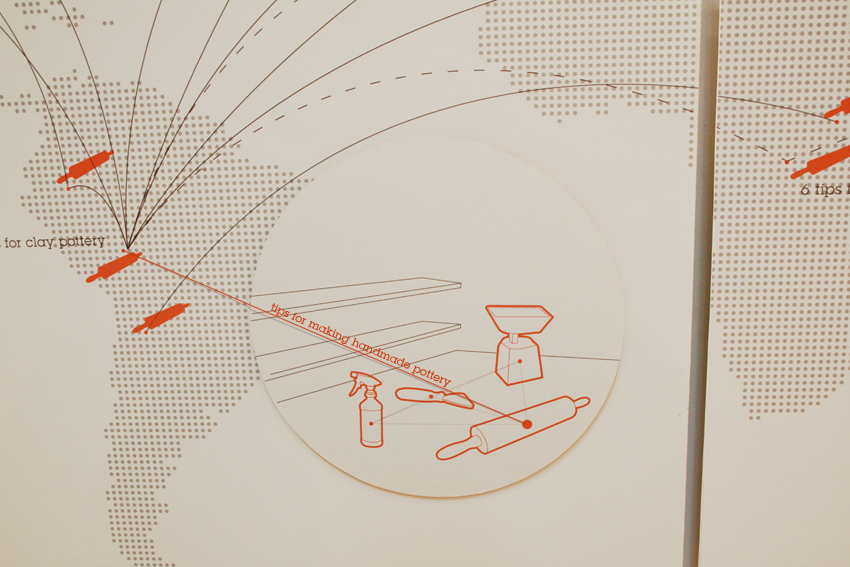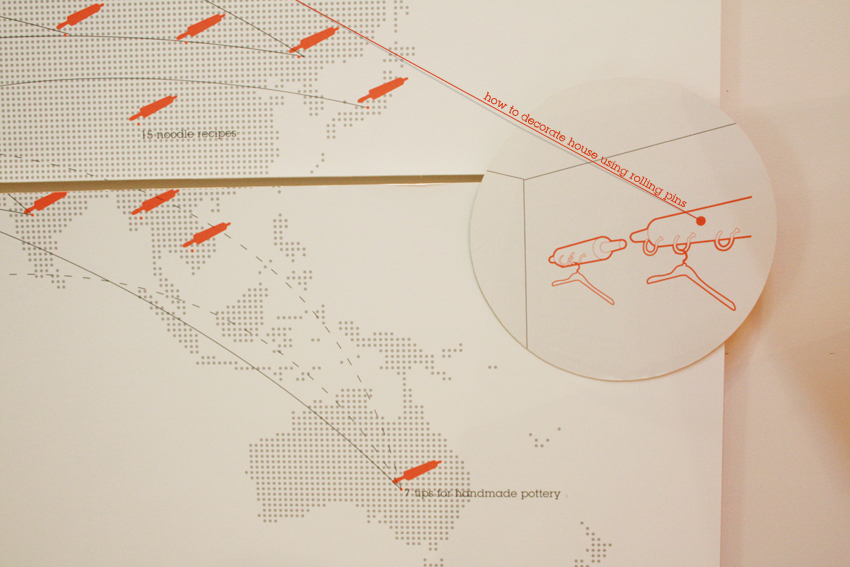SHARING EXPERIENCES AND CULTURE WITH PEOPLE THROUGH EVERDAY OBJECTS, GESTURES, AND USER CONTRIBUTION
“OBJECT 2.0” is a concept proposal for the system of the near future, where the Internet is integrated into physical objects and spaces. The system also suggests the future direction of the ever-developing social Internet. In this system, we could have new terms like object-generated content, object-oriented social network, and real-time serendipitous networks that represent the world. The term object-generated content is an extended version of user-generated content that was created by Web 2.o technology. Current social media tools enable Internet users to create and share their own content, which include their stories and experiences in everyday life, in order to share with others. In my vision, people will generate their own content while they are using the object, through the embedded technology of the future Internet system. For example, the system enables every object to create its own network for people who have the same object or similar objects. For instance, when the end-users purchase an object, they would automatically be given an account and be involved in a network like the way we create our account on the Facebook or Twitter. Also, the system allows users to create content while the user is using an object and share object-generated content between the people in the object’s network. By sharing the object-generated content with others, object-oriented social networks can emerge and create new social interactions, new experiences to communicate and new social relationship among people.
“OBJECT 2.0” also suggests new interfaces that can be used in the pervasive computing environment. My research suggests a new methodology of creating design fiction to design a world 2.o(to quote a term coined by Julian Bleecker). In order to place my system into a real-world scenario, I dramatized some scenes of a popular film and applied my system to envision the possibilities. I used this as a way to stimulate ideas of sharing, in archiving everyday life, and finding new connections with like-minded people.
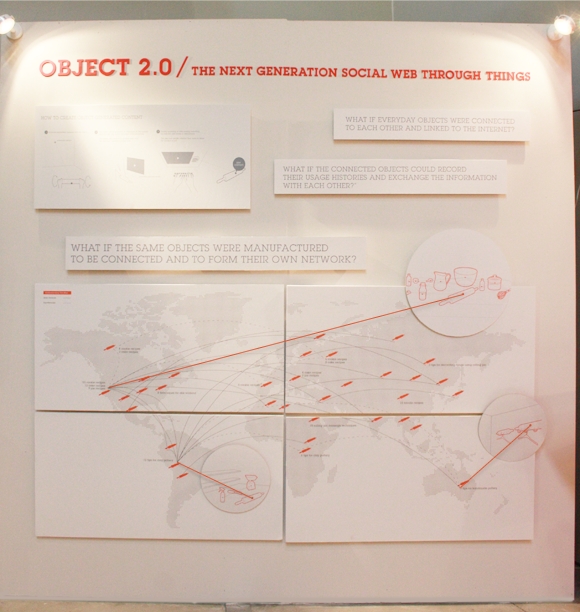
System Description
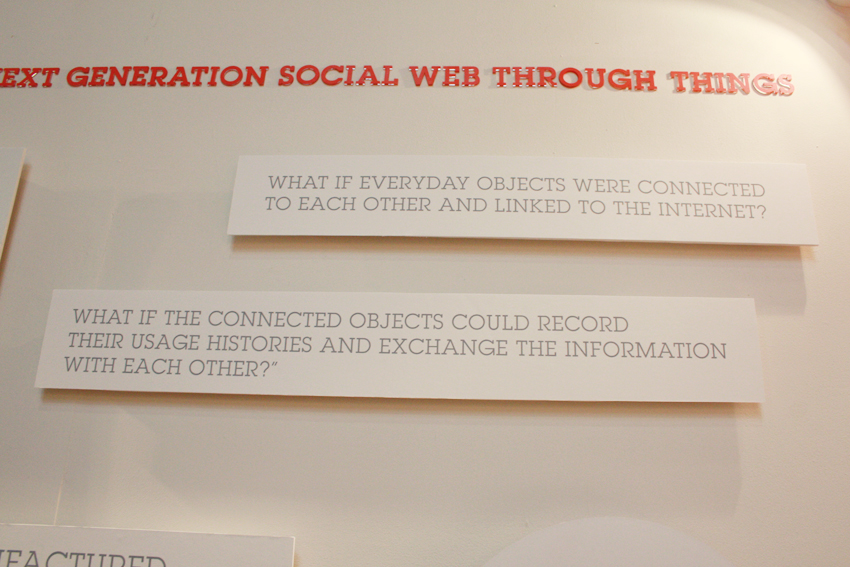
- Networked smart objects
Each object is linked to the Internet and connected to each other. So, they can communicate and exchange its information with each other.
Everyday objects can identify the user and record its usage data. While the user is recording via embedded camera, the invisible data of the object is combined with the recording video.
- Camera
The video camera has gotten cheap because of the rapid growth of its technology. Also, people are familiar with documenting their lives by using the video camera. Therefore, in my vision, in the near future we could have several embedded cameras in a personal space and with objects that are activated by identified users. The embedded video camera will only activate when the user allow the recording.
Since there are several cameras in the personal space, if the user changes his/her position the camera near the user will be activated.
- Display
The data will be displayed by hologram projectors or interactive screens. The hologram projectors and interactive screens will be activated by identified users or objects.
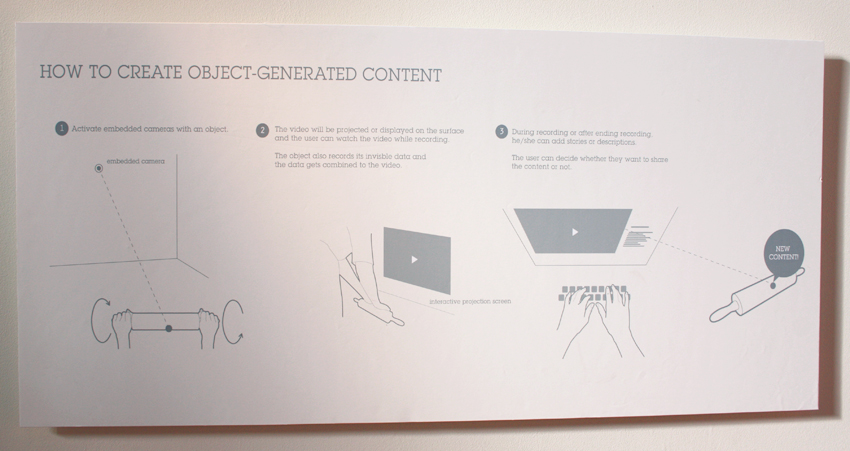
The same objects are manufactured to be connected to one another and to create its own network.
Once an end-user purchases one of the networked objects, the user is automatically creating his/her account in the network. Within the network, people can create different groups and share their contents.
This map represents rolling pin's network. The same rolling pins were manufactured to be connected and purchased by a lot of people all around the world. Even if the rolling pins are same, each rolling pin contains different contents depending on how people use their rolling pins in different ways. Each rolling pin is connected to one another within the main network, so the people who own the rolling pin can share their own contents.
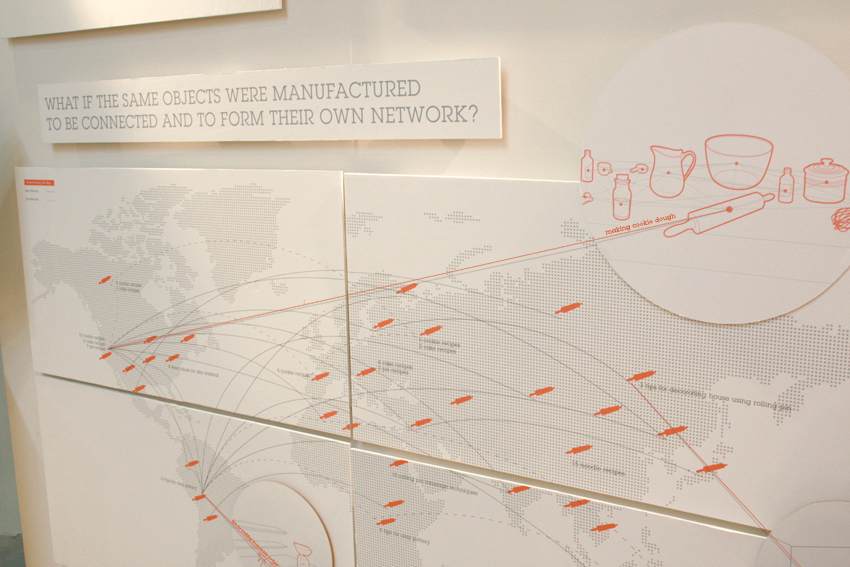
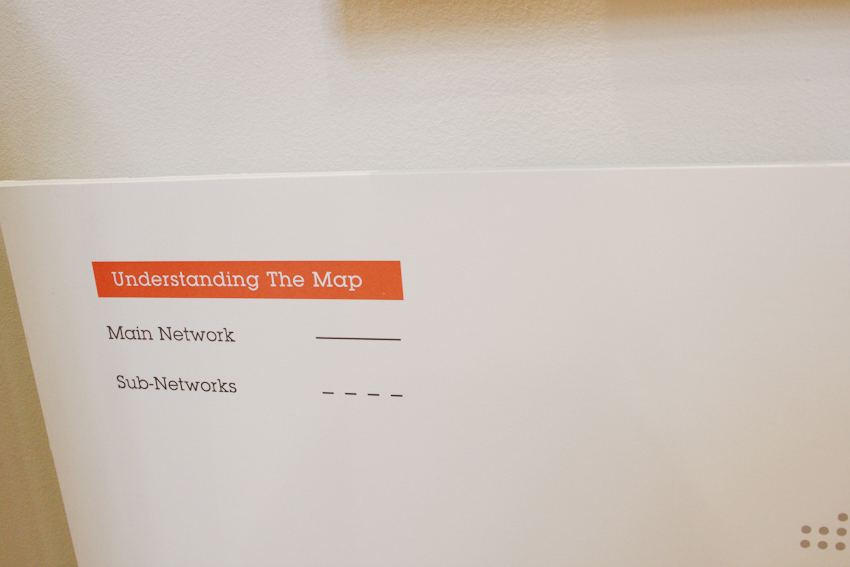
Moreover, the system automatically creates sub-networks among people who are using the object in the similar situation. For instance, the person in the map is using the rolling pin in the pottery room with other pottery making supplies. While using the rolling pin, he is creating the content, "tips for making handmade pottery", at the same time. If there are other people who are using the rolling pin in the similar situation like him, they could be more specifically connected by the sub-network that was created by this system.
